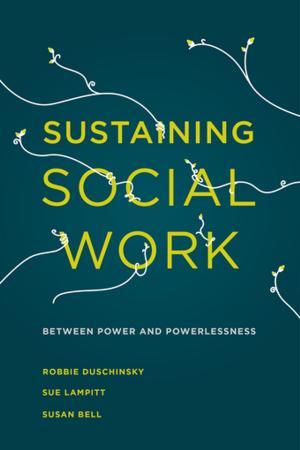Jane Addams
The Founding of the Hull House 1889-1920
Nonfiction, Social & Cultural Studies, Social Science, Social Work| Author: | Anne Nixon | ISBN: | 9780985871116 |
| Publisher: | National Human Services Assembly | Publication: | December 10, 2012 |
| Imprint: | Language: | English |
| Author: | Anne Nixon |
| ISBN: | 9780985871116 |
| Publisher: | National Human Services Assembly |
| Publication: | December 10, 2012 |
| Imprint: | |
| Language: | English |
Jane Addams is one of those amazing individuals who see a need and meet it. She brought strength, comfort, and a meaningful life to thousands of people. She acted to develop a structure of civic justice. She became the first American woman to receive the Nobel Peace Prize. The press called her Saint Jane, and to the people she served, that title must have seemed appropriate. Born in 1860, her life began in a time of upheaval. Between the Civil War and World War I, America was in the midst of monumental change from a rural community to an urban-industrial society. In the early 1800s, there were only 26 states. By 1900 there were 44. Urban manufacturing and corporate monopolies supplanted the rural farming culture. The Emancipation Proclamation and the Reconstruction Act, not only freed the former slaves, but also allowed them to leave the South to find jobs in the industrial North. But for the newly emancipated black population, the “Promised Land” was still only an illusion. Jim Crow meant that black citizens were not welcome at “white” schools, streetcars, restaurants, restrooms or swimming pools, Waves of European immigrants arrived, also seeking a better life but discovering that the streets were not “paved with gold.” Instead they were overwhelmed with culture shock, and feelings of dislocation and fear. As the population of the United States increased by two and a third times between 1870 and 1910, many new arrivals faced long hours and low pay. For a young woman in the 1880s, marriage and motherhood were the traditional life style, but Jane Addams yearned for a life of service to humanity. The early suffragettes had begun to influence her generation. She and her friend from Rockford Seminary, Ellen Gates Starr, looked for “a way to live in a really living world”. On a cultural tour of Europe, Jane experienced, first hand, the true wretchedness of slum life. In London, she observed crowds of pathetic men and women, dressed in rags, desperately bidding their few pennies for some discarded and decaying vegetables and fruit. This experience pointed her beyond the usual “grand tour." After explorations of the London slums, she observed the poverty-stricken beggars of southern Italy and the salt miners of Austria. She later declared that the sight of extreme human need “began to form itself into my mind” into the beginnings of “the very simple plan which afterward developed into the Settlement.” (Hofstadter, Richard. The Age of Reform: From Bryan to F.D.R, p. 229)
Jane Addams is one of those amazing individuals who see a need and meet it. She brought strength, comfort, and a meaningful life to thousands of people. She acted to develop a structure of civic justice. She became the first American woman to receive the Nobel Peace Prize. The press called her Saint Jane, and to the people she served, that title must have seemed appropriate. Born in 1860, her life began in a time of upheaval. Between the Civil War and World War I, America was in the midst of monumental change from a rural community to an urban-industrial society. In the early 1800s, there were only 26 states. By 1900 there were 44. Urban manufacturing and corporate monopolies supplanted the rural farming culture. The Emancipation Proclamation and the Reconstruction Act, not only freed the former slaves, but also allowed them to leave the South to find jobs in the industrial North. But for the newly emancipated black population, the “Promised Land” was still only an illusion. Jim Crow meant that black citizens were not welcome at “white” schools, streetcars, restaurants, restrooms or swimming pools, Waves of European immigrants arrived, also seeking a better life but discovering that the streets were not “paved with gold.” Instead they were overwhelmed with culture shock, and feelings of dislocation and fear. As the population of the United States increased by two and a third times between 1870 and 1910, many new arrivals faced long hours and low pay. For a young woman in the 1880s, marriage and motherhood were the traditional life style, but Jane Addams yearned for a life of service to humanity. The early suffragettes had begun to influence her generation. She and her friend from Rockford Seminary, Ellen Gates Starr, looked for “a way to live in a really living world”. On a cultural tour of Europe, Jane experienced, first hand, the true wretchedness of slum life. In London, she observed crowds of pathetic men and women, dressed in rags, desperately bidding their few pennies for some discarded and decaying vegetables and fruit. This experience pointed her beyond the usual “grand tour." After explorations of the London slums, she observed the poverty-stricken beggars of southern Italy and the salt miners of Austria. She later declared that the sight of extreme human need “began to form itself into my mind” into the beginnings of “the very simple plan which afterward developed into the Settlement.” (Hofstadter, Richard. The Age of Reform: From Bryan to F.D.R, p. 229)















